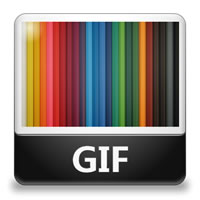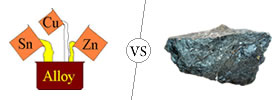Difference between GIF and TIFF
Key difference: GIF stands for Graphics Interchange Format. The filename used for a GIF file is .gif or .GIF. GIF is a raster graphics format, mainly used for graphic images. TIF and TIFF are filename extensions used for the Tagged Image File Format. The Tagged Image File Format is a file format for storing images.
 GIF and TIFF are file formats used for storing digital images. However, they do differ in the manner they are used. Both GIF and TIFF are types of bitmap images. The term bitmap essentially means a map of bits or specifically a ‘spatially mapped array of bits’. The term bitmap is rooted in computer programming terminology. A bitmap images uses different colored pixels, which are arranged in a manner to display an image. Examples of bitmap images include .png, .psd, .jpg, .gif, .tif, or .bmp
GIF and TIFF are file formats used for storing digital images. However, they do differ in the manner they are used. Both GIF and TIFF are types of bitmap images. The term bitmap essentially means a map of bits or specifically a ‘spatially mapped array of bits’. The term bitmap is rooted in computer programming terminology. A bitmap images uses different colored pixels, which are arranged in a manner to display an image. Examples of bitmap images include .png, .psd, .jpg, .gif, .tif, or .bmp
GIF stands for Graphics Interchange Format. The filename used for a GIF file is .gif or .GIF. GIF is a raster graphics format, mainly used for graphic images. The GIF was first introduced in 1987 and is still one of the popularly used formats on webpages. However, its popularity has been decreasing lately, especially after the introduction of PNG. PNG aimed to be an improvement over GIF and hoped to address the limitations of the older format. Nonetheless, PNG has not been able to usurp GIF’s position in animation, as PNG like most other formats, including JPEG, does not support animation.
GIF, on the other hand, supports up to 8 bits per pixel, or 256 colors. This is a very limited range of colors, and as such is generally not used for photographs. Formats such as JPEG can support up to 16.7 million colors, which allows JPEG to give a more accurate representation of real life. Instead, GIF uses similar colored pixels close together in an attempt to trick the eye.
GIF is a lossless compression, which means that all the data on the image is stored when the image is compressed, i.e. there is no change in resolution. However, this also means that a same image will end up taking more data space as a GIF file than say a JPEG image. GIF uses the Lempel–Ziv–Welch compression, also known as LZW compression.
 TIF and TIFF are filename extensions used for the Tagged Image File Format. The Tagged Image File Format is a file format for storing images. It is popular among graphic artists, the publishing industry, and among both amateur and professional photographers. The Tagged Image File Format is currently under the control of Adobe Systems.
TIF and TIFF are filename extensions used for the Tagged Image File Format. The Tagged Image File Format is a file format for storing images. It is popular among graphic artists, the publishing industry, and among both amateur and professional photographers. The Tagged Image File Format is currently under the control of Adobe Systems.
The Tagged Image File Format is widely supported by image-manipulation applications, by publishing and page layout applications, 3-D imaging applications, and by scanning, faxing, word processing, optical character recognition and other applications. It is a bitmapped image format that supports various resolutions.
TIFF is a lossless data compression; it stores the image file with virtually no compression. This means that all the data on the image is stored when the image is compressed, i.e. there is no change in resolution. The TIFF format allows the editing and resaving of the image without suffering a compression loss. Hence it is often used for storing images that need to be edited and re-saved.
TIFF files can have a bit depth of either 16-bits per channel or 8-bits per channel. Also, multiple layered images can be stored in a single TIFF file. The Tagged Image File Format is widely supported by image-manipulation applications, by publishing and page layout applications, 3-D imaging applications, and by scanning, faxing, word processing, optical character recognition and other applications. It is a bitmapped image format that supports various resolutions. The Tagged Image File Format is used to store very large, high quality images, with files being as large as 4GB each.
Image Courtesy: softicons.com, veryicon.com









Add new comment